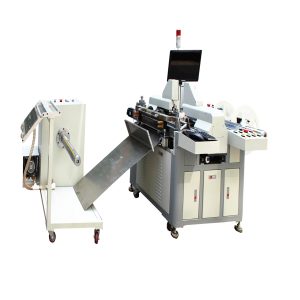Cómo funciona la máquina de serigrafía
Cómo funciona la máquina de serigrafía
1.The working cycle program of the flat screen screen printing machine takes the flat screen platform type single color semi-automatic hand surface screen printing machine as an example. One of its working cycles is: feeding → positioning → off the plate → scraping ink plate, Raise the ink return plate → Squeegee stroke → Raise the ink scraper plate → Lower the ink return plate → Lift the plate → Ink return stroke → Release positioning → Receipt.
In continuous cycle actions, as long as the function can be realized, the time occupied by each action should be as short as possible to shorten the same period of each work cycle and improve work efficiency.
2.Línea de impresión. During the printing stroke, the squeegee squeezes the ink and the screen printing plate, causing the screen printing plate and the substrate to form a contact line, which is called an impression line. This line is at the edge of the squeegee, and countless embossing lines form the printing surface. Achieving the ideal nip line is difficult because the printing stroke is a dynamic process.

3.The working principle of screen printing machine.
Taking the commonly used hand-shaped screen printing machine as an example, the working principle of the screen printing machine can be described as follows: power is transmitted through the transmission mechanism, allowing the squeegee to squeeze the ink and screen printing plate in motion, so that the screen The printing plate and the substrate form an embossing line. Since the screen has tensions N1 and N2, it generates force F2 on the squeegee. The rebound force makes the screen printing plate not in contact with the substrate except the embossing line. The ink is Under the action of the extrusion force F1 of the squeegee, the printing is leaked from the moving printing line to the substrate through the mesh.
During the printing process, the screen printing plate and the squeegee move relative to each other, and the extrusion force F1 and the rebound force F2 also move synchronously. Under the action of the rebound force, the screen returns to the position in time and is out of contact with the substrate to avoid being damaged. The marks are smudged. That is, the screen is constantly deforming and rebounding during the printing process.
After completing the one-way printing, the squeegee and the screen printing plate are separated from the printing substrate, and at the same time return to ink, completing a printing cycle. The distance between the top of the substrate and the back of the screen printing plate after ink return is called the same plate distance or screen distance, which should generally be 2 to 5mm. When printing manually, the operator’s technique and proficiency directly affect the formation of the embossing line. In practice, screen printing workers have accumulated a lot of valuable experience, which can be summarized into six points, namely ensuring linearity, uniformity, isogonality, pressure equalization, centering and verticality in the movement of the squeegee. That is to say, when printing, the squeegee should move forward in a straight line and cannot swing left and right; it cannot move forward slowly and then fast, fast forward and slow back, or slowly and suddenly fast; the inclination angle to the ink plate should remain unchanged, and special attention should be paid to overcoming the inclination angle. A common problem that gradually increases; the printing pressure should be kept uniform; the distance between the squeegee and the inner sides of the screen frame should be equal; the ink plate should be kept perpendicular to the frame.
 Máquina de serigrafía
Máquina de serigrafía